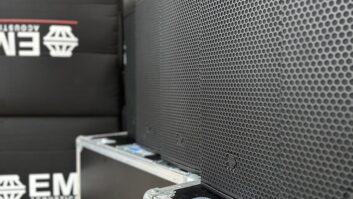Audio is the most critical part of a conferencing application. Lars-Olof Janflod of Genelec provides an overview of conference room audio design exclusively for TFA.
A conference room will be used for many activities involving information sharing and communication. Presentations, video conferencing and telepresence systems are used to enhance business communication connections around the world. A well optimised conference room will allow the technology behind these solutions to support the business. Technology should never be a limiting factor and good audio can aid fluency and allow all participants to actively share and contribute to the process.
Room design
Audio is the most critical part of a conferencing application and it can be disturbed by several factors, such as reverberations in the room, ambient and traffic noise and even noisy equipment inside the room. A modern building contains hundreds of unintended sound sources. Elevators, HVAC systems, ventilation ducts and plumbing, just to name few. A good room for audio is silent before the equipment is fired up.
The ideal scenario for constructing a conference room is to have the opportunity to create a purpose-built environment where you can to take into account the basic dimensions, room size, height, windows and doors etc. This is not always possible, but whatever the room size or situation, some basic acoustic planning will be needed. For example, softening elements should be applied to absorb the energy caused by reflections from hard surfaces. The usual items for achieving this effect are carpets, curtains and chairs. That said, treating one or more of the big surfaces inside the room with a properly designed acoustic material will help.
The biggest open surface is often the ceiling, which can help with placing the acoustic treatment and blending it with the interior. The bigger the room and seating capacity, the greater the demands for acoustic treatment, since humans not only absorb acoustic energy to some degree, but also generate a fair amount of ambient noise with papers and laptops etc.
Loudspeaker system
Selecting a loudspeaker system starts with the room volume, main dimensions and the listening distance. These, combined with the intended application and sound pressure level requirement, will indicate the basic scale of the system needed. This will normally include a pair of loudspeakers placed next to the screen area. If a teleconferencing system is included, this might require a third speaker on the centre line of the room. Rooms with larger listening distances should be fitted with additional loudspeakers placed further back from the screen to encompass the back row or seats. Ideally, the entire system should be designed by a skilled audio professional and should be started well in advance before any concrete is mixed!
Cabling will always be an issue where several video and audio signals are mixed together, as in a conferencing system. To begin with, there is no general rule as to what kind of cables are needed and where. Along with the audio and video equipment, there are usually control systems, communication lines, security systems and network cabling for LAN. Cabling is often also the reason why systems get expensive, since all devices need dedicated cabling and the cabling system will need dedicated design and installation. Often, even with the finest quality equipment specified, the quality of a system will stand or fall by the cabling.
Networks
As more devices become IP compatible, ethernet will increasingly become the standard cabling choice. This is because distributing all signals via standard LAN cabling and switches makes the cabling design easy and universal. All that devices require is mains power and a LAN point with RJ45 connector. CAT6 cable is widely available and most contractors can install the cabling and terminate the connectors. The need for special AV-system cabling is reduced. However, there will still be a need for system integration design, since connectivity alone does not make devices operate as the user needs them to.
The control and signal management still needs to be organised, but in the near future this will become a setup and software task. Today there are several companies specialising in control system design and programming, but soon all manufacturers will need to provide some level of support for the network based systems.
Audio over IP
Visitors to ISE 2011 (1-3 Feb, Amsterdam RAI) will have the opportunity to see a fully operational system that demonstrates the software and hardware capabilities of an audio over IP solution. GAIP (Genelec Audio over IP) has evolved through extensive R&D work and is designed to deliver the best possible audio over IP technology for professional installation applications.
GAIP works seamlessly with today’s standard IP networks. It is fully standards-compliant and can co-exist and co-operate as a part of other standards-compliant solutions. Furthermore it is compatible with USB sound card support that exists in most computer platforms and operating systems.
The GAIP demonstration will be on display on booth #1H79 at ISE 2011 as a key part of Genelec’s audio solutions for the professional installation market.
Lars-Olof Janflod is international sales director for Genelec







